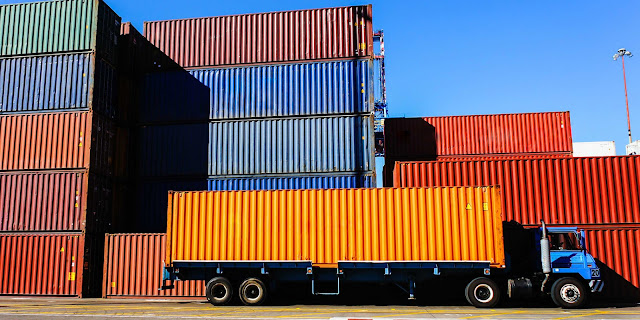The Growing Need for Recycled Plastics
 |
| Recycled Plastics |
As plastic pollution continues to damage our
environment, the need for effective plastic recycling has never been greater.
Recycled plastics play a vital role in reducing plastic waste and creating a
more sustainable future.
Plastic Waste Crisis
Plastic production has increased dramatically over the past decades. In
1960, global plastic production was around 15 million metric tons per year. By
2015, this figure had risen to around 350 million tons annually and is
projected to double again by 2050. Much of this plastic ends up as waste.
Only a fraction of the plastic produced is recycled. Most plastic items are
designed for single-use and then discarded. Much of this waste ends up
polluting land and oceans. According to experts, there could be more plastic
than fish in the oceans by weight by 2050 if production continues at current
rates without improvements in waste management. Microplastics from plastic
waste are even invading the food chain and entering human diets. The persistent
pollution caused by plastic waste has become a serious global environmental
issue.
Importance of Recycled
Plastics
Increasing recycling rates is seen as a key solution to reducing plastic
pollution and moving towards a circular plastics economy. Recycling plastic
waste prevents it from accumulating in landfills and the environment, while
also providing an alternative feedstock for new plastic products. Recycled
plastics reduce the need for virgin plastic production, thus lowering emissions
and conserving valuable resources. It takes almost 90% less energy to produce goods
from recycled plastic compared to virgin plastic. Boosting the collection and
reprocessing of plastic waste on a global scale could significantly curb
further environmental damage.
Challenges in the System
However, plastic recycling still faces numerous challenges that limit its
effectiveness on a large scale. Most plastic products are complex mixtures of
different polymers that are difficult to separate during recycling.
Contamination of recyclable plastic with food waste or other non-plastic items
also reduces its quality and value. Collection systems need to be expanded to
capture more plastic waste before it ends up as litter. Public education is
still necessary to increase participation in recycling programs and reduce
unrecyclable items entering the waste stream. Additionally, unstable oil prices
and lack of stable recycling have discouraged investments in plastic
reprocessing infrastructure in many regions. Overcoming these hurdles requires
co-operation across the plastics value chain from producers to consumers.
Improving Infrastructure
Significant upgrades to waste management infrastructure are underway in
many countries to increase plastic recycling capacities and efficiencies.
Advanced collection methods including deposit-return schemes are being adopted.
New mechanical sorting facilities use innovative separation technologies like
near-infrared spectroscopy to efficiently sort mixed plastic recyclates.
Increased automation in materials recovery facilities allows for processing of
larger volumes. Additionally, developing mechanical and chemical recycling
technologies can expand the range of plastics that can be reprocessed. These
infrastructure investments are helping expand plastic recycling programs to
reach more communities.
Policy Support Needed
Government policies are also playing a key role in driving the transition
to a circular economy for plastics. Waste reduction targets, landfill bans on
recyclable materials, extended producer responsibility programs, and plastic
bag charges have successfully boosted recycling in many jurisdictions.
Mandating minimum recycled content in plastic products creates guaranteed
end-markets for recyclers. Harmonizing global standards for plastic
recyclability and labeling would facilitate international plastic waste trade
and scale up of recycling industries. Government incentives for advanced
recycling technology research could accelerate development of solutions. With
strong policy frameworks and investments, higher plastic recycling rates can be
achieved to curb pollution and foster sustainability.
Recycled Plastics Applications
As recycling capacities increase, recycled plastics are finding a diverse
range of high-quality applications. Recycled HDPE and PET are commonly used in
production of new plastic bottles and food containers. Post-consumer plastic
waste gets upgraded uses in construction applications such as timber
substitutes, insulation, pipes and drainage systems. Advanced technologies are
enabling reprocessing of more complex plastic waste streams into textiles, 3D
printing filaments, and automotive components. Closing plastic waste loops in
this manner creates value from discarded materials and builds reliable
end-markets for recyclers. With dedicated efforts across industries, a circular
plastics system can be realized with recycled plastics playing a leading role.
As plastic pollution mounts and becomes increasingly difficult to ignore,
empowering plastic recycling is taking center stage in global sustainability
agendas. Significant progress has been made but much more remains to be done.
Close international cooperation, policy support, infrastructure investments and
public participation hold the key to fully unlocking the potential of recycled
plastics. By prioritizing waste reduction at source and establishing robust
plastic recycling systems, we can revolutionize plastic production and
consumption patterns towards creating a more circular economy. Moving in this
direction is essential for protecting our environment and building a greener future
for generations to come.
For
more details on the report, Read- https://www.trendingwebwire.com/recycled-plastics-growth-demand-and-overview/
Get more insights on this topic: https://coolbio.org/understanding-human-embryonic-stem-cells/



Comments
Post a Comment